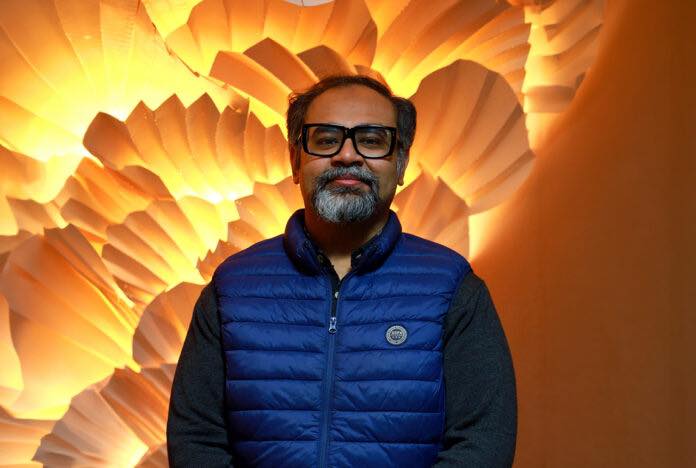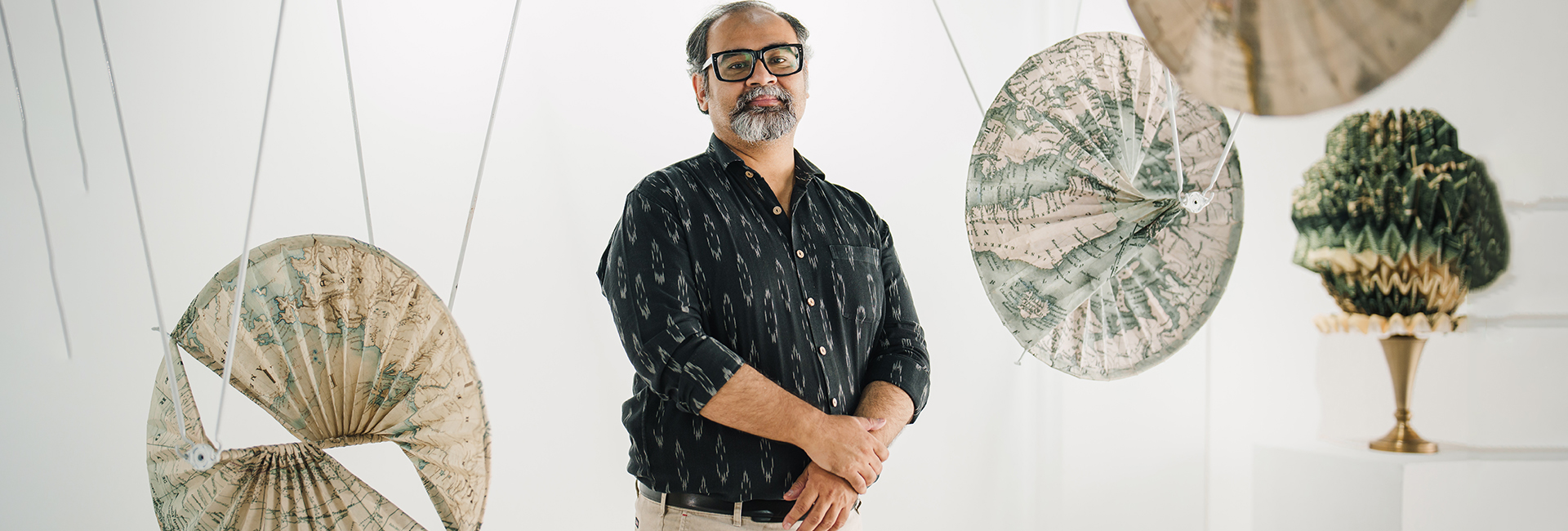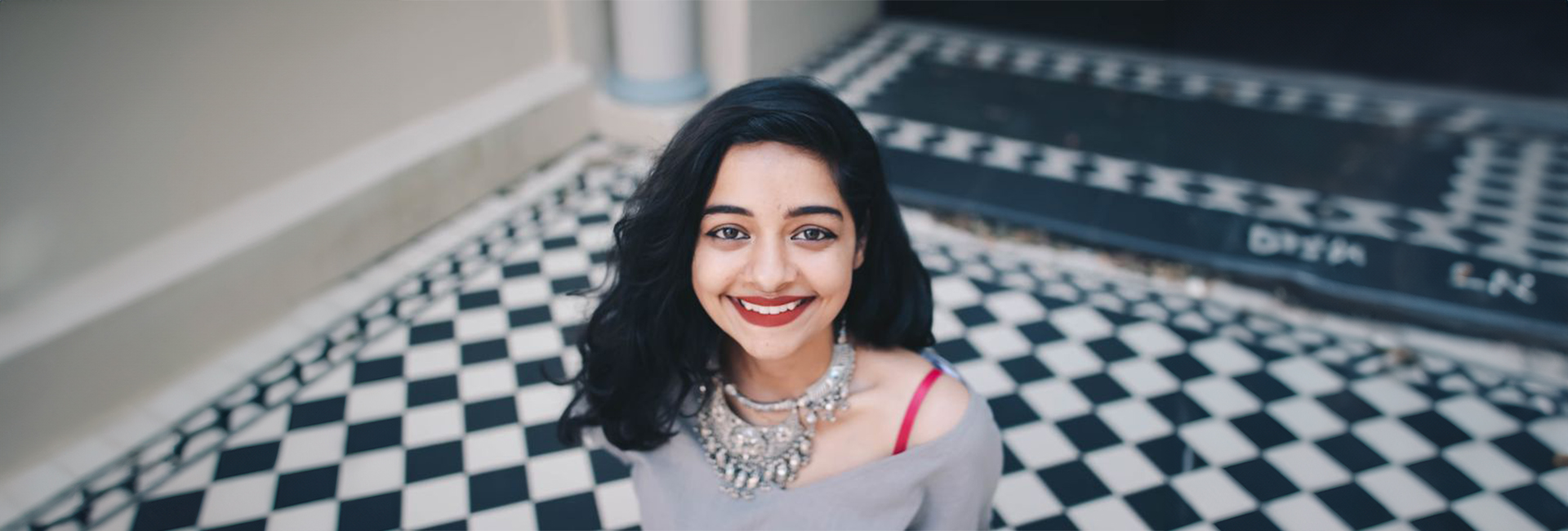(September 21, 2024) Trained as an architect, Ankon Mitra has found his calling as an artist, particularly through the ancient Japanese technique of origami. Over the past decade, the 42-year-old has carved a name for his unique art (central to which is the technique of folding) that transform materials as different as paper and concrete into monumental sculptures that redefine spatial dynamics and textures.
Recipient of the All-India Gold Medal for Sculpture in 2018 from the Prafulla Dahanukar Foundation, his art has been published in the Victoria and Albert Museum’s catalogue of ‘Papercrafts’ published by the Thames and Hudson in 2018.

Ankon Mitra
Having showcased his work across the world, including the CODA Museum in Apeldoorn, The Netherlands, and Arte Laguna, Arsenale de Nord, Venice (2021), the India Pavilion of the London Design Biennale at the Somerset House (2022), and the Shanghai Paper Art Biennale (2023), the artist has transcended boundaries due to the universal nature of his work.
He shares with Global Indian, “My work is an extension of my love of nature. From a beehive to the center of a sunflower—everything I do is centered around nature. It is my inspiration and constant muse.”
An accidental artist
Born and brought up in Delhi in an artistically inclined family, Ankon never explored the possibility of being an artist. “My mother worked with the Ministry of Defense, while my father was in the steel trade. While we were interested in the artistic side of life, no one in my family pursued it seriously.”
Incidentally, his passion for art stemmed from his interest in landscape architecture, as he confesses that he always loved the clean lines of a well-tended garden. He explains, “I was always interested in math and science, so that gives a great sense of grounding and balance to my art. Because I am artistically inclined as well as technically minded, I can see things uniquely.”
View this post on Instagram
Folding is intrinsic to Ankon’s art. He started with folding paper, as it made him look at things structurally differently. The interplay of light and shadows in folded structures fascinated him, which led to his initiation into art. His ability to take the fragile, often overlooked medium of paper and transform it into complex, layered structures earned him recognition both in India and internationally.
“When you fold something, a flat structure appears three-dimensional due to the trick of light,” he notes and adds, “Fold is a natural form. We are all made of folds, and through my experiments, I hope to showcase diverse perspectives.”
He experiments not only with paper but with various materials like metal, wood, fabric (from ikat to zardosi), and even concrete, pushing the boundaries of traditional art forms.
A mirage of forms
One of Ankon’s most significant achievements is his contribution to the intersection of art and science, where he applies the principles of origami to solve architectural and engineering problems. His large-scale installations explore eclectic concepts, creating immersive experiences that invite viewers to contemplate the delicate balance between order and chaos.
View this post on Instagram
In a short period, the artist has made a name for himself. In 2014, when he had his first show (he laughs, saying he did not sell a single work from the exhibition), he introduced the concept of working with different materials to the art world. By 2016, when he had his second show, he had already made his mark and gained confidence, as was seen in stunning installations that included metal folding and using origami techniques to work with fabric.
His latest show, Maps Unfolded, uses historic maps (from traditional Indian pilgrimage maps, printed bazaar maps, and city maps) to create a stunning array of work. One interpretation shows the juxtaposition of the British Map of Jaipur from 1920 and the UNESCO World Heritage Map in 2012. While a folded surface gives a glance of the same localities separated by nearly a century, one can see how time changes borders, populations, and priorities.
He explains, “I want people to view narratives in unexpected ways. As one walks around the maps, different stories emerge from different views. The visual comparison shows how the syntax of the journey of cities and people can change with the passage of time.”
Other installations show the maps of Tibet that explore terrain through folds, while others use the Japanese technique of origami to create objects of startling beauty. Apart from maps, installations traverse the genres of space and nature, a recurring theme in the artist’s work.
View this post on Instagram
A global artist
The artist proudly states that group effort is core to his output. He works with a team of architects at his studio in Delhi, and given the size and scale of the work he does, collaboration is a key part of his artistic process. Another key aspect of his success lies in the fact that there is a dialogue between the artist and the material (from jute to cane) that shines through. Depending on the medium, he derives the process be it making molds, undercutting the strength of the material or creating distorted shapes.
In little over ten years, the artist has made his mark for his eclectic work without precedence. Ask him why, and the genial artist smiles, “It is because geometry is universal and I layer Indian sensibility throughout my works. The material, the sense of color, and the references are all Indian, while the outlook is international. My work marries global thought with Indian roots.”
View this post on Instagram
Ankon’s work has been exhibited in prestigious galleries and art fairs across the world, and he continues to inspire with his pioneering approach. What makes his art special is its capacity to evoke wonder—a simple fold in his hands becomes a dynamic, intricate universe that mirrors the complexity of life itself.
- Follow Ankon Mitra on Instagram
Read a similar story of Jasleen Kaur wins Turner Prize for an art inspired by her Scottish Sikh heritage.




